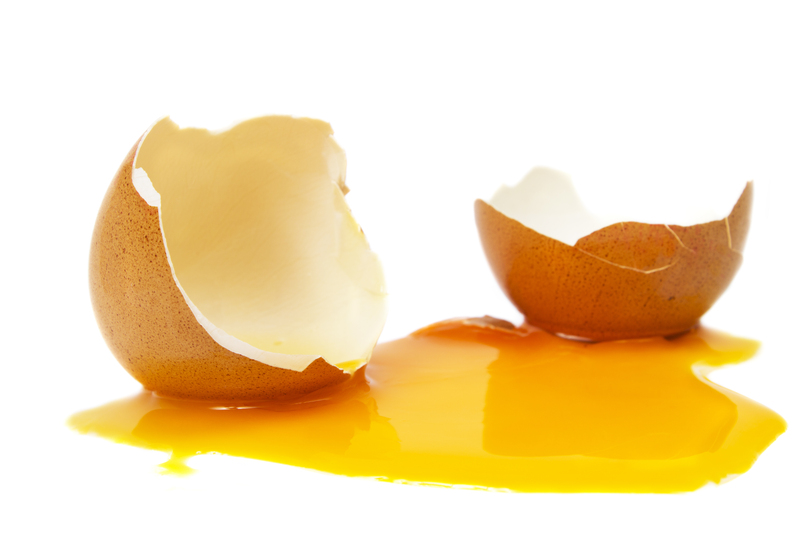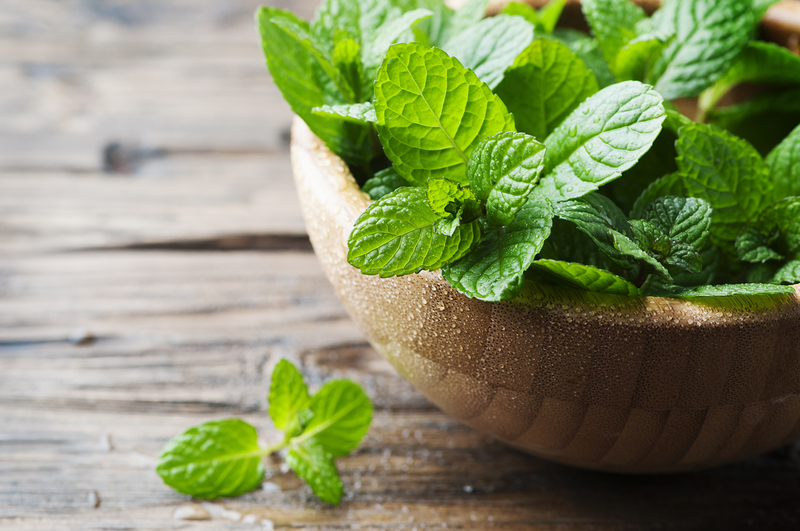Make Grease Disappear: A Hassle-Free Guide to Enamel Tray Cleaning
Posted on 22/05/2025
Make Grease Disappear: A Hassle-Free Guide to Enamel Tray Cleaning
Has stubborn grease transformed your enamel tray into a cleaning nightmare? If you cook and bake often, you know how quickly oil, sauce, and burnt-on residue can build up. Fortunately, cleaning enamel trays doesn't have to be a Herculean task. This comprehensive guide reveals time-tested, hassle-free methods to make grease vanish--leaving your beloved enamelware sparkling, rust-free, and ready for culinary magic!
Understanding Enamel Trays
Before diving into cleaning solutions, let's explore what makes enamel trays special:
- Durable and Non-porous: Created by fusing powdered glass to metal, enamel trays resist stains and odors.
- Beautiful and Versatile: Their glossy finish adds a touch of elegance to any kitchen.
However, that glossy enamel surface, while tough, does demand special care--especially when fighting grease and burnt-on food.

The Science Behind Grease Build-Up
Grease is a notorious kitchen nuisance, especially on cookware like enamel roasting trays and baking pans. Oils, fats, and proteins in food break down and adhere to surfaces when heated. Over time, repeated roasting, grilling, or baking creates layers of stubborn grime that can seem impossible to remove.
But don't worry! With the right techniques and some household staples, grease removal from enamel trays is entirely achievable--and often easier than scrubbing other surfaces like cast iron or aluminum.
Essential Tools and Ingredients for Cleaning Enamel Trays
Before you get started, gather supplies that make cleaning enamelware trays fast and effective:
- Soft sponges or cloths (avoid steel wool!)
- Dish soap (grease-cutting formulas work best)
- Baking soda
- White vinegar
- Hot water
- Rubber gloves (for sensitive skin)
Optional items:
- Hydrogen peroxide (for tough stains)
- Lemon juice
- Plastic scraper
Step-by-Step Guide: How to Make Grease Disappear from Enamel Trays
1. Immediate Action: Don't Let Grease Sit!
As soon as you're done cooking or baking, let your enamel tray cool. Never immerse a hot tray in cold water--thermal shock can crack or chip the enamel.
Once it's warm (not hot), wipe away excess grease or crumbs with a paper towel. This quick step prevents further buildup and makes the next phase easier.
2. Soak to Loosen Stubborn Grime
Fill the tray with hot, soapy water. Let it soak for at least 15-30 minutes, or overnight for heavy grease deposits. Soaking works wonders by softening food residues and stuck-on oils--making them easier to remove without aggressive scrubbing.
3. Gentle Scrubbing: The Right Technique
After soaking, use a soft sponge or dishcloth to scrub the enamel surface. For corners and crevices, a soft-bristle brush (or even an old toothbrush) works well. Avoid steel wool or abrasive pads, as they can scratch or dull the surface of your enamel baking tray.
Tip: For extra power, sprinkle baking soda on tough spots before scrubbing. Baking soda acts as a mild abrasive and deodorizer, making it ideal for enamel greased tray cleaning.
4. Natural Cleansers: Baking Soda & Vinegar Method
If stains persist or you want a chemical-free cleaning solution, try this classic method:
- Make a paste by mixing three parts baking soda to one part water.
- Spread the paste generously over the greasy or stained sections of your enamelware tray.
- Spritz or drizzle white vinegar on top. The resulting fizz helps break down grime.
- Let it sit for 30 minutes, then scrub gently with a sponge and rinse thoroughly.
This method is highly effective for restoring a shiny, grease-free finish without using harsh chemicals.
5. Hydrogen Peroxide for Stubborn Burnt-On Grease
Some enamel trays accumulate black, carbonized stains that seem impossible to remove. Here's how hydrogen peroxide can help:
- Mix hydrogen peroxide (3%) with baking soda to form a thick paste.
- Apply to the toughest stains and let sit for 2-3 hours.
- Wipe and rinse thoroughly.
Warning: Always test a small, inconspicuous area first. Hydrogen peroxide is generally safe on enamel, but prolonged contact should be avoided.
6. Lemon Juice for a Fresh Finish
Not only does lemon juice cut through grease, but it also leaves your enamel tray smelling fresh:
- Rub half a cut lemon directly on the greasy surface, or add lemon juice to your soaking water.
- Rinse well and dry.
Lemon can help remove surface stains and deodorize your enamelware baking trays.
Pro Tips: How to Prevent Grease Build-Up on Enamelware
- Line with parchment paper or silicone mats when roasting or baking oily foods. This minimizes direct contact and eases cleanup.
- Clean promptly after use; the longer grease sits, the harder it is to remove.
- Avoid nonstick cooking sprays, which can sometimes leave a stubborn, sticky residue on enamel trays.
- Never use abrasive scouring pads or powder cleansers that could scratch and dull your enamel cookware.
Frequently Asked Questions About Enamel Tray Cleaning
Can I Put Enamel Trays in the Dishwasher?
Many modern enamel trays are labeled dishwasher-safe. However, repeated dishwasher cycles can eventually dull the finish or cause chipping--especially along edges. For best results, hand washing is recommended, particularly for vintage or high-end enamelware.
How Do I Remove Rust Spots from My Enamel Tray?
If your enamel tray develops tiny chips or scratches, moisture may seep in and cause rusty spots. To minimize rust:
- Dry enamel trays thoroughly after each wash.
- If rust appears on exposed metal areas, scrub gently with baking soda, rinse, and dry.
- For severe chipping, consider retiring the tray from food use.
Why Does My Cleaned Enamel Tray Still Look Dull?
Sometimes residue from baked-on oil or repeated detergents can create a hazy film. Remedy this by wiping the tray down with a vinegar-water solution, then rinsing and drying. This should restore the trademark shine and brilliance of enamelware.
Common Mistakes to Avoid When Cleaning Enamel Trays
- Using Abrasive Scouring Pads: These can scratch or dull the surface--opt for soft sponges or brushes instead.
- Immediate Cold Water Rinse: Exposing hot enamel trays to cold water can cause them to chip or crack.
- Leaving Trays Wet or Damp: Always dry thoroughly to prevent watermarks or rust.
- Ignoring Stuck-on Food: The longer residue sits, the tougher it becomes to remove.
Your Hassle-Free Routine for Sparkling Enamel Trays
Consistency is key for keeping your enamel trays grease-free and gorgeous:
- After each use: Rinse, wipe excess grease, and soak if needed.
- Weekly: Give trays a gentle scrub with baking soda or a vinegar rinse for a deep clean.
- Monthly: Inspect for chips, stains, or spots and treat them to avoid permanent marks.

Why Cleaning Enamel Trays Matters
Clean trays aren't just about aesthetics--they help:
- Prevent lingering odors from old oils.
- Minimize cross-contamination with fresh ingredients.
- Avoid smoke (from old, burnt grease) during cooking or baking.
- Extend the life of your enamelware, preserving its beauty and usefulness for years to come.
Conclusion: Effortless Enamel Tray Cleaning Is Possible!
Banishing grease from your enamel trays doesn't have to involve harsh chemicals or endless scrubbing. With everyday ingredients like baking soda, vinegar, and lemon juice, you can make grease disappear easily--all while protecting the lustrous finish of your enamelware.
Remember, regular, gentle cleaning is the secret to keeping your trays spotless and stain-free. Soak, scrub, and rinse--and you'll always have cookware that's ready to shine in your kitchen (and at the dining table).
Ready to enjoy hassle-free enamel tray cleaning? Try these tips today, and make each meal cleaner and more delightful than ever!



